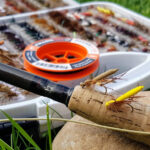Got tiny bugs buzzing around your kitchen? You probably have fruit flies. These annoying pests are common, but thankfully, easy to eliminate. You likely have everything you need already! This guide shares effective DIY fruit fly traps and prevention tips, based on real-world testing.
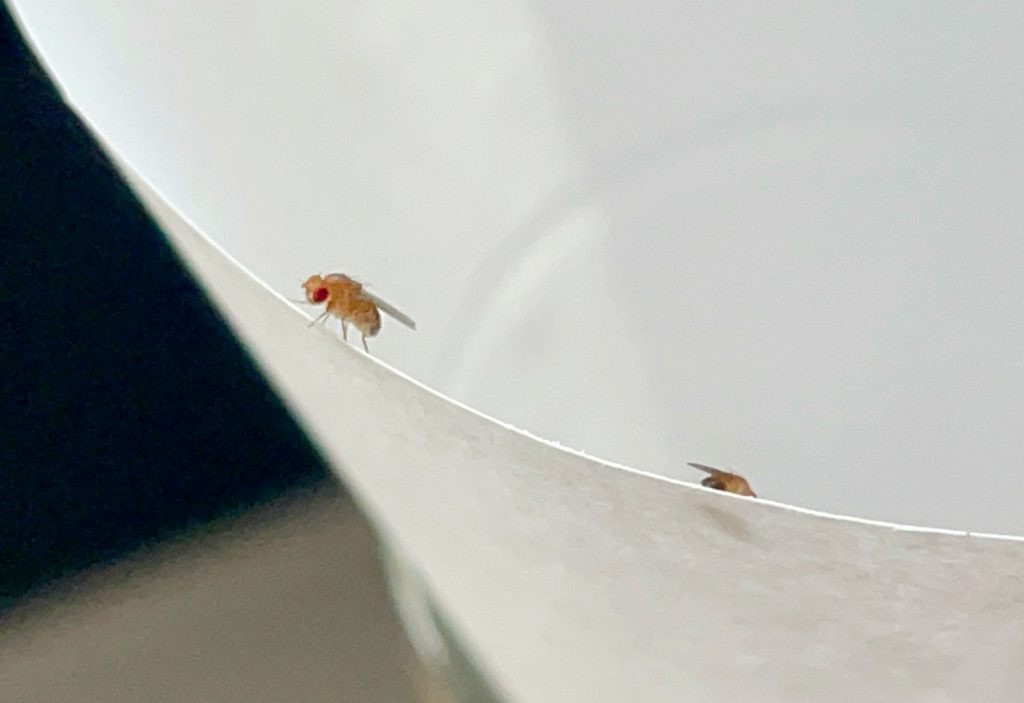 Close Up Of Fruit Fly On Paper Funnel
Close Up Of Fruit Fly On Paper Funnel
Fruit flies are small, tan or brown insects with red eyes, attracted to ripe or fermenting fruits and vegetables, sugary drinks, and even kitchen drains. A few flies can quickly multiply, as females lay hundreds of eggs that hatch in just 12 hours. That’s why fast action is crucial.
Identifying Fruit Flies vs. Other Pests
Fruit flies are often confused with fungus gnats (resembling tiny mosquitos, found near houseplants) and drain flies (looking like fuzzy moths, found near drains). Fruit flies resemble small houseflies and hover around fruit, trash, or other food sources. If you’re unsure, try one of the traps below – if it works, you’ve got fruit flies!
4 Effective DIY Fruit Fly Traps
These traps use natural ingredients to lure fruit flies in and prevent their escape. We tested four methods:
1. The Funnel Trap
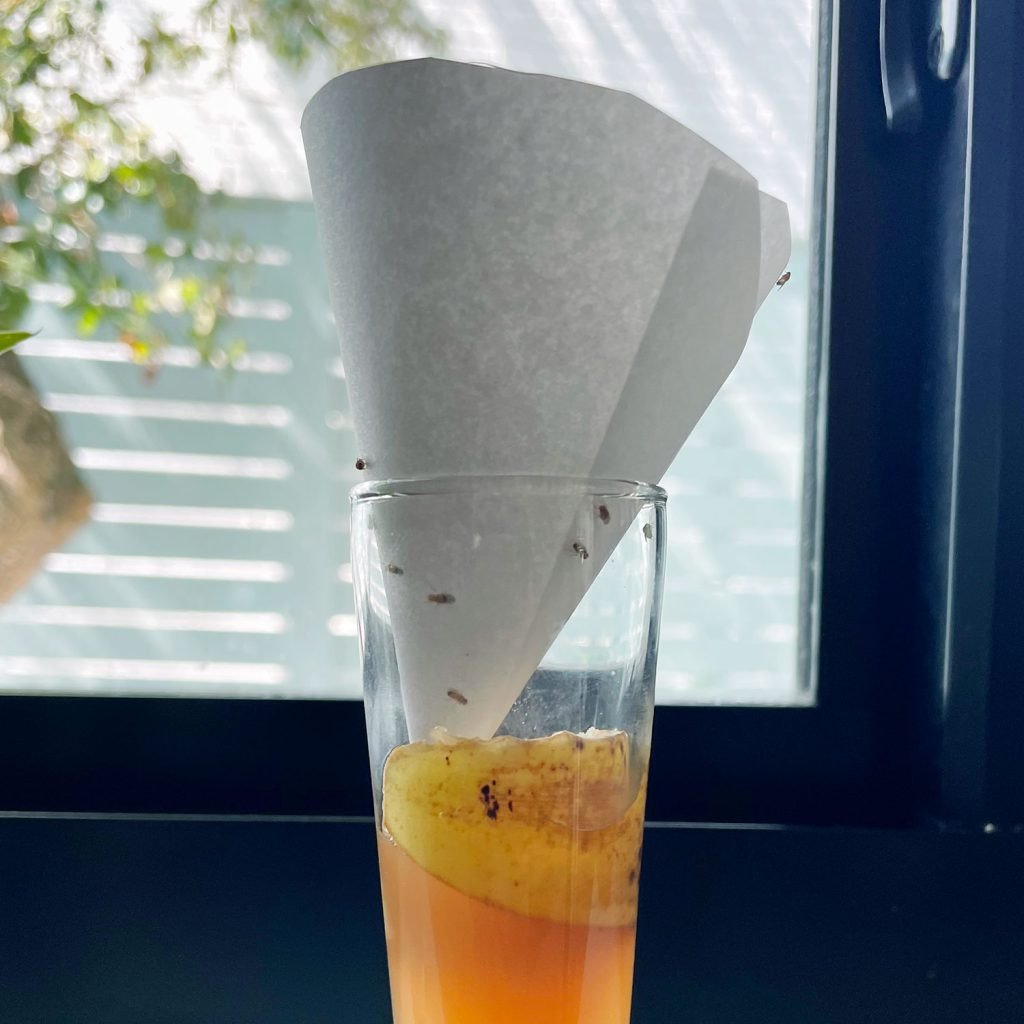 DIY Fruit Fly Trap With Paper Funnel
DIY Fruit Fly Trap With Paper Funnel
This trap uses a paper funnel to guide flies into a jar containing apple cider vinegar (ACV), old beer, or wine. The small opening makes it hard for them to escape. You can release trapped flies outdoors by carefully removing the funnel outside. Using a store-bought funnel may be less effective due to a larger opening.
2. The Plastic Wrap Trap
This trap uses a similar principle to the funnel trap. ACV (or old beer/wine) is placed in a jar, covered with plastic wrap secured with a rubber band. Tiny holes poked in the plastic allow flies to enter but make escaping difficult. You can release them outdoors by carefully removing the plastic wrap outside. This method also works with a metal jar lid with a small hole punched in it.
3. The Dish Soap Trap
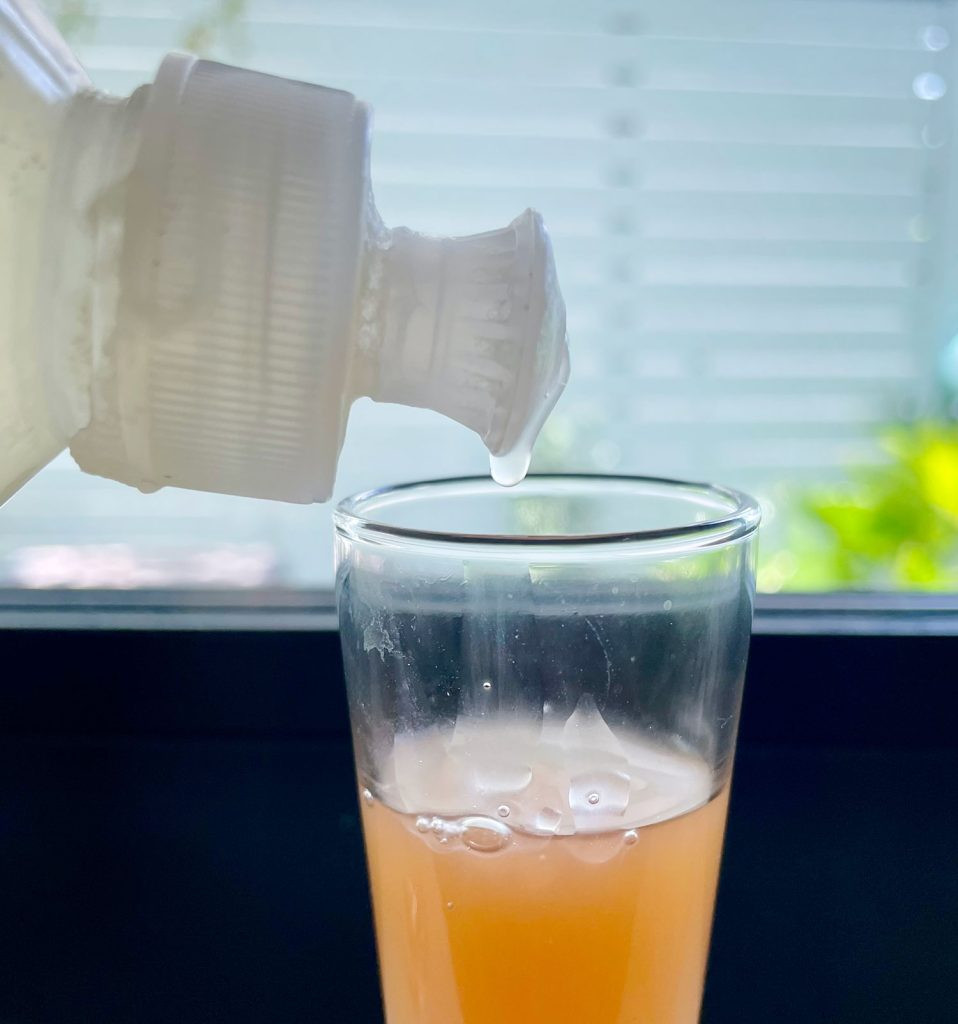 Dripping Dish Soap Into Apple Cider Vinegar For DIY Fruit Fly Trap
Dripping Dish Soap Into Apple Cider Vinegar For DIY Fruit Fly Trap
This simple trap uses a mixture of ACV and dish soap in a container. Flies are attracted to the ACV, but the soap makes it difficult for them to fly away. Note: this method doesn’t allow for releasing flies alive. You can also combine dish soap with the funnel or plastic wrap traps for increased effectiveness.
4. The Rotting Fruit Trap
Instead of ACV, use a piece of overripe fruit (banana peel, apple slice, peach) in the plastic wrap or funnel trap. Replace the fruit every 1-2 days to avoid unpleasant odors. You can also combine fruit scraps with ACV.
The Most Effective Fruit Fly Trap: Our Experiment
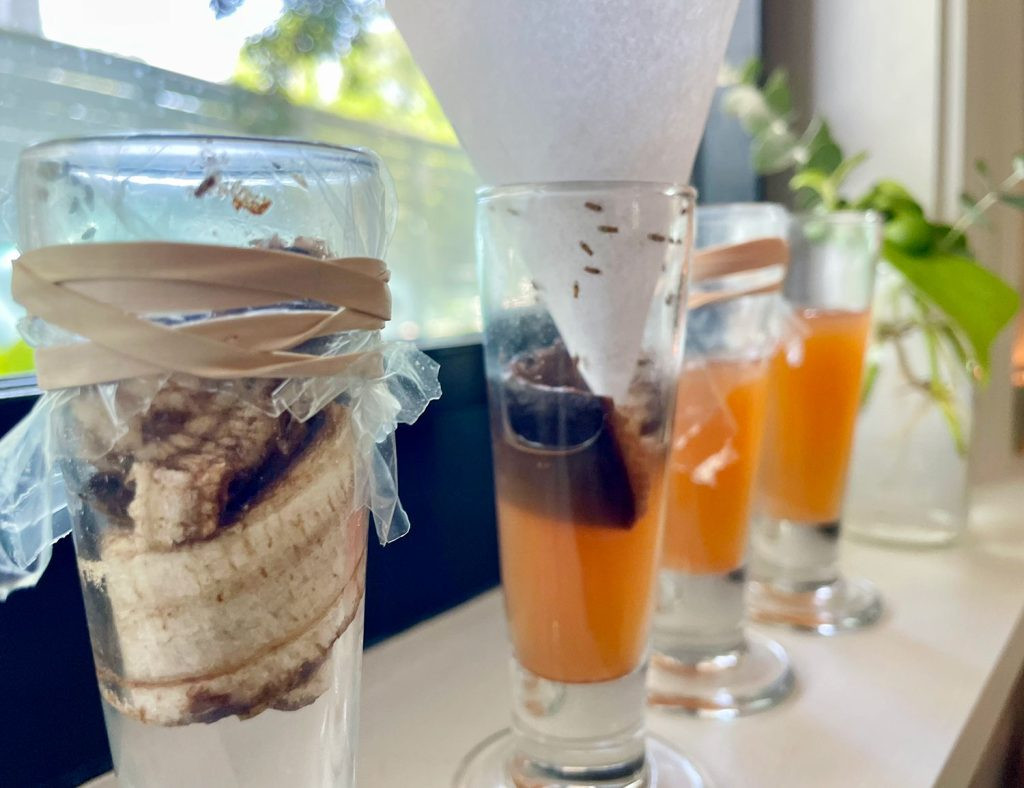 4 DIY Fruit Fly Traps Close Up
4 DIY Fruit Fly Traps Close Up
We found that traps with banana peels significantly outperformed those with ACV alone. Adding a fruit scrap to any trap greatly increases its effectiveness. We slightly preferred the plastic wrap trap for its ease of construction and stability.
Which Fruit Attracts Fruit Flies Best?
We tested banana peel, apple slices, and strawberries. Surprisingly, strawberries were the most attractive, followed by banana peels. Apple slices didn’t attract any flies.
Store-Bought Fruit Fly Traps: A Comparison
 Collage of Storebought Fruit Fly Traps
Collage of Storebought Fruit Fly Traps
While DIY traps were more effective initially, store-bought traps like Terro Traps worked well over longer periods. They are a more discreet option for ongoing prevention.
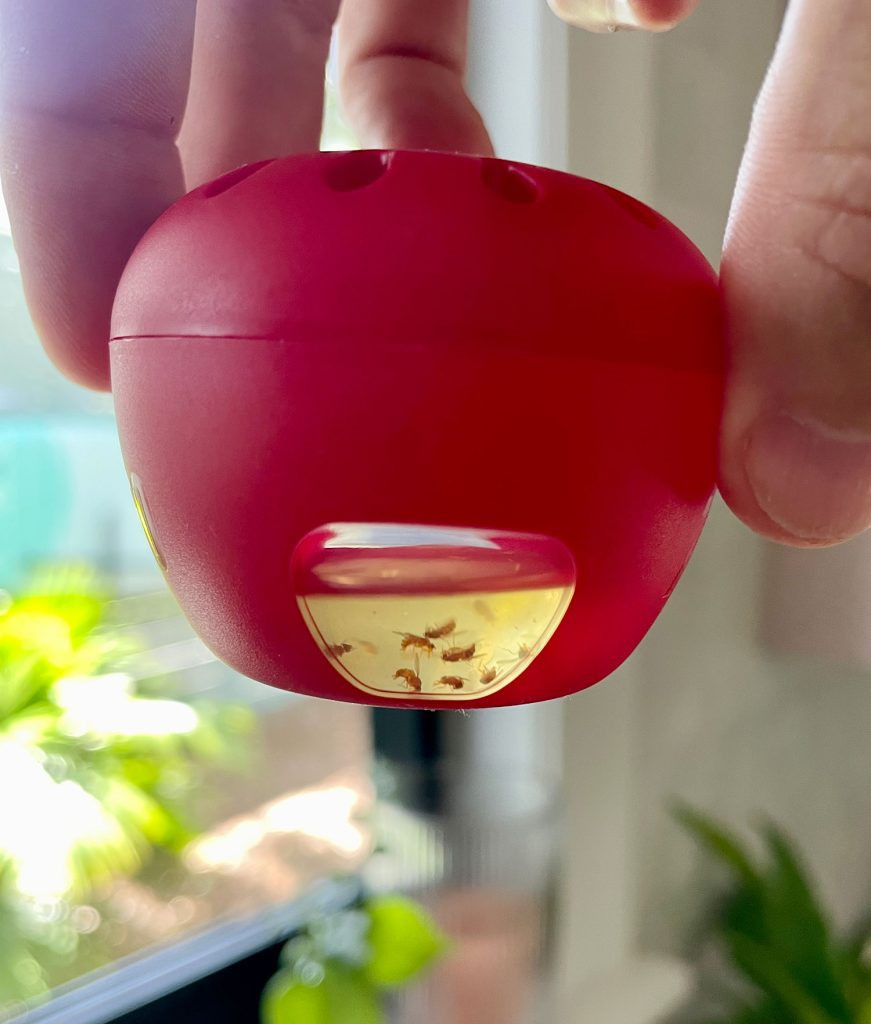 Terro Fruit Fly Trap With Dead Fruit Flies Visible
Terro Fruit Fly Trap With Dead Fruit Flies Visible
Preventing Fruit Flies: Proactive Measures
Preventing fruit flies is key: clean kitchen surfaces regularly, remove trash daily, dispose of overripe fruit promptly, wash produce immediately after purchase, store produce in the refrigerator, and clean sink drains regularly.
By using these DIY traps and prevention tips, you can effectively get rid of fruit flies and keep your kitchen clean and pest-free.

